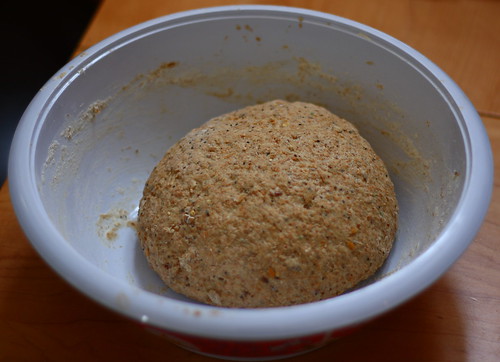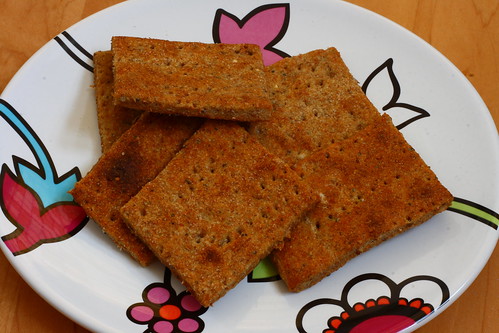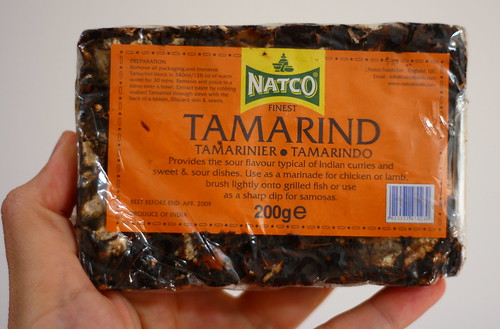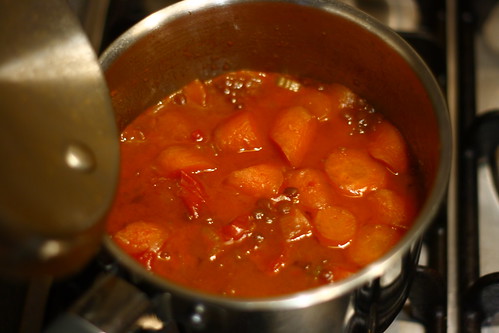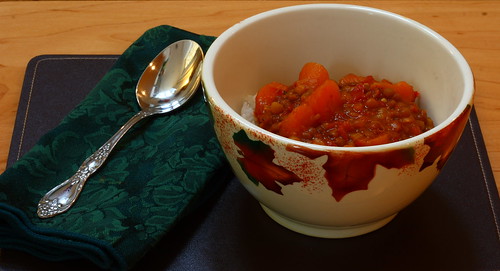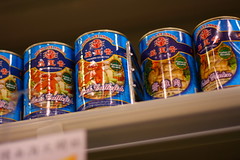Oh, yum.
When we made these crackers/cookies last fall, we couldn’t follow the recipe exactly because we had no measuring implements. This time, we measured well but fiddled with the ingredients, added a few new seeds and spices, and treated the dough differently… and lo que la diferencia! This produces an almost flaky, flavorful, tender cracker which can accompany a soft white cheese, or be eaten alone, by the handful.
Let’s start with Sumita’s original recipe, which is basically as follows:
- 1C seeded whole wheat flour
- 1C whole wheat flour
- 1/2C wheat bran
- 2 Tbsp cumin seeds, roasted & broken
- 1 Tbsp capsicum / pepper flakes
- 1/2 tsp bicarbonate of soda
- 1/2 tsp salt
- 1/2 tsp sugar
- 1 Tbsp oil
- 1/2 c of milk
Because we wanted to add another layer of flavor, we used our Sadie (who is, of course, our sourdough starter) to jump start this dough — a cup and a half of the sour flour, yeast and water mix was added to the two cups of flour. Because Sadie provided moisture, we subtracted the milk. We also measured the salt this time (!) and dusted about a eighth of a teaspoon over the whole batch before baking.
Brown and yellow mustard seeds, celery seed, and eight caraway seeds were added to our spices, and ground along with the dry-fried cumin. (Dry frying seed spices can really allow the essential oils to more thoroughly suffuse, and really makes the flavor and fragrance of spices more intense.) The biggest difference in the crackers, though, is how we treated the dough. We rolled it out, spritzed it with olive oil, and folded it as if we were making pastry.
After docking, slicing, and baking, this folding method showed itself to be really successful. The texture of the crackers was at first dense and chewy, then lightened into crispy on the outside and slightly chewy inside, as they cooled. The pepper and cumin came together perfectly,and created a really flavorful, tender cracker that we had a hard time not snacking on for the rest of the afternoon. If you prefer black pepper to capsicum or cayenne, it’s an easy switch to do a coarse grind and add it to the mix. Because these crackers were originally described as cookies, we will one day experiment with using dried and fresh ground ginger and black pepper with a bit of sugar sprinkled on top to create a different kind of pfefferkuchen, or pepper cookie. The possibilities are endless…
No matter how much we might like the light crunch of a saltine, the taste is bland as chewing white paper compared to the seasoned and spicy punch of cumin crackers. You can use them as flat bread, and or use a biscuit cutter and make them in large rounds, or other shapes. Whatever you choose, you’ve got to try these!


